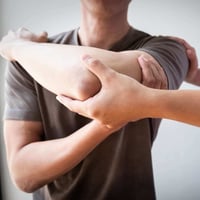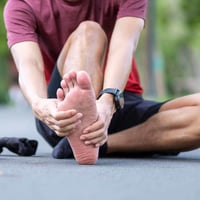How To Go From Rotator Cuff Strain To Pain Free Shoulders

A rotator cuff strain is a common shoulder injury that can cause pain, weakness, and limited mobility, affecting athletes, active individuals, and those with repetitive overhead movements. The rotator cuff is a group of four muscles and tendons that stabilize the shoulder and allow controlled movement. When these structures are overstretched or torn, daily activities such as lifting, reaching, or even sleeping can become painful.
If left untreated, a rotator cuff strain can lead to chronic shoulder instability or tears. Fortunately, with physical therapy, strength training, and proper movement modifications, most people can recover without surgery. Below, we’ll explore the causes, symptoms, and expert-backed strategies for managing rotator cuff injuries, including how physical therapy in NYC can help you regain full shoulder function.
What Causes a Rotator Cuff Strain?
A rotator cuff strain occurs when the tendons or muscles in the shoulder experience excessive stress, leading to small tears or inflammation. Common causes include:
1. Repetitive Overhead Movements
- Sports such as swimming, baseball, tennis, and weightlifting place repeated stress on the rotator cuff.
- Jobs involving frequent overhead reaching or lifting can contribute to gradual wear and tear.
2. Sudden Trauma or Injury
- Falls on an outstretched arm can strain or tear the rotator cuff tendons.
- Heavy lifting with poor shoulder mechanics can overload the muscles.
3. Age-Related Degeneration
- As we age, the rotator cuff tendons naturally weaken, making them more prone to injury.
- Decreased blood supply can lead to slower healing and increased risk of tendon fraying.
Symptoms of a Rotator Cuff Strain
The severity of a rotator cuff strain depends on the extent of the injury. Symptoms can range from mild discomfort to significant pain and weakness. Common signs include:
- Pain in the front or side of the shoulder, especially when reaching overhead or behind the back
- Weakness in the affected arm, making it difficult to lift objects
- Clicking or popping sounds with shoulder movement
- Pain that worsens at night, particularly when lying on the injured side
- Limited range of motion, making activities like putting on a shirt or brushing hair difficult
For more details on symptoms and their progression, check out Cleveland Clinic’s guide to rotator cuff injuries.
How Can Physical Therapy Help?
If you’re searching for physical therapy near you, a shoulder specialist in NYC can develop a personalized rehabilitation plan to help restore strength, mobility, and pain-free function. Treatment typically includes:
1. Range of Motion & Stretching Exercises
- Pendulum swings and cross-body shoulder stretches to maintain flexibility.
- Capsular mobility exercises to prevent stiffness and improve joint motion.
2. Strengthening the Rotator Cuff and Shoulder Stabilizers
- Resistance band exercises to gently activate and strengthen the rotator cuff muscles.
- Scapular stabilization exercises to improve shoulder mechanics and reduce strain.
3. Manual Therapy & Soft Tissue Mobilization
- Hands-on techniques to improve blood flow and release muscle tension.
- Trigger point therapy to alleviate pain from overworked muscles.
4. Postural Correction & Shoulder Mechanics Training
- Teaching proper shoulder blade positioning to offload stress from the rotator cuff.
- Ergonomic recommendations for workstations and lifting techniques to prevent reinjury.
Self-Care and Prevention Strategies
In addition to physical therapy in NYC, incorporating these at-home strategies can speed up recovery and prevent reinjury.
1. Apply Ice and Heat Therapy
- Ice packs for 15-20 minutes can reduce inflammation after activity.
- Heat therapy before stretching can relax tight muscles.
2. Avoid Overhead Strain
- Modify activities to avoid repetitive overhead motions while healing.
- Use step stools instead of overreaching for high objects.
3. Sleep in a Shoulder-Friendly Position
- Sleep on your non-injured side with a pillow supporting your arm.
- Try sleeping on your back with a pillow under the affected arm for better alignment.
4. Strengthen the Supporting Muscles
- Engage in rotator cuff-specific exercises like external rotations and scapular squeezes.
- Work on core and upper back strength to ensure better shoulder stability.
When to See a Doctor or Physical Therapist
If your symptoms persist for more than 2-3 weeks, worsen with movement, or are accompanied by severe weakness, it’s time to seek professional help. A doctor may recommend imaging tests such as X-rays or MRIs to assess the severity of the strain or rule out a rotator cuff tear.
A physical therapy place near you that specializes in shoulder rehabilitation can develop a structured treatment plan to restore function and prevent long-term damage.
Final Thoughts
Rotator cuff strains are painful but treatable with the right approach—including going to physical therapy near you for strengthening exercises and lifestyle modifications. If you’re looking for expert care, find and book a physical therapist in Brooklyn or your nearest PT clinic in NYC now on MotionSync for a comprehensive rehabilitation program.




